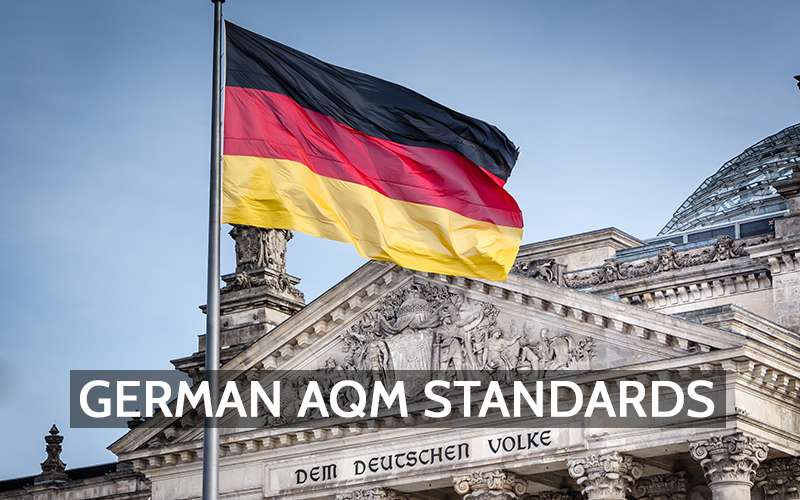Germany has long been at the forefront of environmental protection, implementing comprehensive air quality regulations to safeguard public health and the environment. These regulations have evolved over decades, reflecting advancements in scientific understanding and policy development. This article explores the key legislative frameworks governing air quality in Germany, their historical context, and the future trajectory of air quality regulation in the country.
Historical Development of Air Quality Regulations in Germany
Germany’s commitment to air quality management dates back to the mid-20th century. In 1964, the country introduced the “Technical Instructions on Air Quality Control” (Technische Anleitung zur Reinhaltung der Luft), commonly known as TA Luft. This regulation set emission limits for various pollutants and established guidelines for industrial operations to minimize air pollution. Over the years, TA Luft has undergone several revisions, with significant updates in 1974, 1983, 1988, and 2002, to incorporate new scientific findings and technological advancements1.
A pivotal moment in Germany’s environmental legislation was the enactment of the Federal Immission Control Act (Bundes-Immissionsschutzgesetz, BImSchG) in 1974. This act serves as the cornerstone of Germany’s air quality management, aiming to prevent harmful environmental effects caused by air pollution, noise, vibrations, and similar phenomena. It provides a legal framework for regulating emissions from industrial facilities, vehicles, and other sources, ensuring that air quality standards are maintained nationwide.
Key Components of Germany’s Air Quality Regulations
Germany’s air quality regulations encompass several critical components:
- Emission Standards: The BImSchG and TA Luft set specific emission limits for pollutants such as particulate matter (PM10 and PM2.5), nitrogen oxides (NOx), sulfur dioxide (SO2), and volatile organic compounds (VOCs). These standards apply to various sectors, including industry, transportation, and agriculture, requiring the adoption of best available technologies to minimize emissions.
- Ambient Air Quality Standards: In alignment with European Union directives, Germany has established ambient air quality standards to protect human health and the environment. These standards define maximum allowable concentrations of pollutants in the air and are regularly updated based on scientific research and World Health Organization (WHO) guidelines.
- Monitoring and Reporting: The Federal Environment Agency (Umweltbundesamt, UBA) is responsible for monitoring air quality across Germany. It operates an extensive network of monitoring stations that collect data on various pollutants, ensuring compliance with national and EU standards. The UBA publishes annual reports detailing air quality status and trends, providing transparency and informing policy decisions.
- Low-Emission Zones (Umweltzonen): To reduce vehicular emissions, several German cities have established low-emission zones where only vehicles meeting specific emission standards are permitted. For instance, Berlin’s Environmental Zone, implemented in 2008, restricts access to vehicles without a valid environmental badge, effectively reducing urban air pollution.
Recent Developments and Future Outlook
Despite significant progress, Germany continues to face challenges in meeting stringent air quality targets. In recent years, the country has encountered legal actions due to non-compliance with EU air quality standards. In July 2024, the Berlin-Brandenburg Higher Administrative Court ruled that Germany must enhance its air pollution control program to meet EU requirements, highlighting the need for more effective measures to reduce pollutants such as ammonia, particulate matter, sulfur dioxide, and nitrogen oxides2.
In response to these challenges, Germany is actively working to strengthen its air quality regulations. The government has committed to supporting amendments to the EU Ambient Air Quality Directive, aiming to align national standards with the latest WHO guidelines. Additionally, Germany’s National Clean Air Programme outlines measures to achieve significant reductions in air pollutant emissions by 2030, focusing on sectors like transportation, industry, and agriculture3.
Looking ahead, Germany’s air quality regulation is expected to evolve in several key areas:
- Stricter Emission Limits: The European Union is moving towards adopting more stringent air quality standards. In October 2024, the EU Council formally adopted a directive setting updated air quality standards to be achieved by 2030, closely aligning with WHO guidelines. Germany, as an EU member state, will implement these standards, necessitating further reductions in pollutant emissions4.
- Enhanced Monitoring and Enforcement: Advancements in monitoring technologies will enable more accurate and real-time tracking of air quality. Germany is likely to invest in expanding its monitoring network and improving data analytics to ensure compliance and identify pollution hotspots promptly.
- Integration of Climate and Air Quality Policies: Recognizing the interlinkages between air pollution and climate change, Germany is expected to adopt integrated policies that address both issues simultaneously. This approach includes promoting renewable energy, enhancing energy efficiency, and encouraging sustainable transportation options to reduce greenhouse gas and pollutant emissions.
- Public Engagement and Awareness: Public participation is crucial for the success of air quality initiatives. Germany is likely to enhance public awareness campaigns, encouraging citizens to adopt eco-friendly practices and support policies aimed at improving air quality.
Germany’s air quality regulations have evolved through a combination of national legislation and adherence to EU directives, reflecting a commitment to protecting public health and the environment. While significant progress has been made, ongoing challenges necessitate continuous efforts to strengthen and adapt these regulations. By embracing stricter emission limits, enhancing monitoring systems, integrating climate and air quality policies, and engaging the public, Germany aims to achieve cleaner air and a healthier environment for future generations.
Related Articles:
Insights into Government and Private Initiatives in China
References:
- https://en.wikipedia.org/wiki/TA_Luft
- https://www.reuters.com/business/environment/german-government-must-do-more-tackle-air-pollution-court-rules-2024-07-23/
- https://www.umweltbundesamt.de/en/press/pressinformation/germany-complies-air-quality-limit-values-nearly
- https://www.consilium.europa.eu/en/press/press-releases/2024/10/14/air-quality-council-gives-final-green-light-to-strengthen-standards-in-the-eu/


